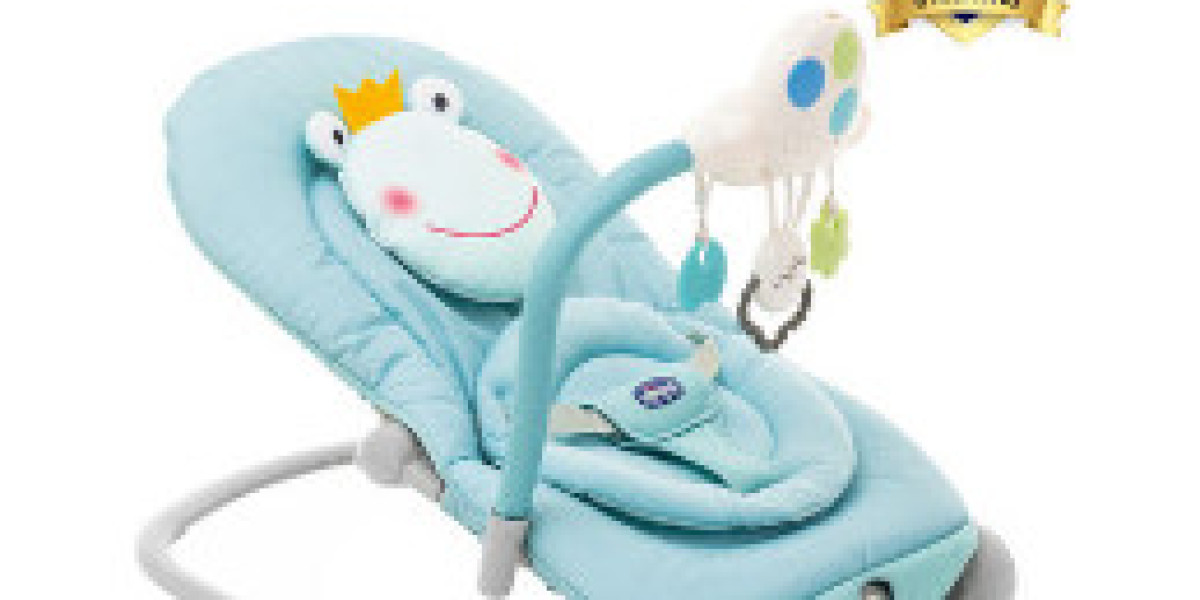baby bouncer have become a staple in many households, offering parents a convenient way to soothe and entertain their little ones. But what is it about these devices that makes them so effective in calming fussy infants? Understanding the science behind baby bouncers can shed light on how motion impacts infant comfort and development, helping parents make informed choices about their baby gear.
The Role of Motion in Soothing Infants
1. Mimicking Natural Movements
Babies are naturally comforted by movement. In utero, they experience constant motion as their mothers move about. After birth, babies often find comfort in being rocked or held. Baby bouncers mimic this soothing motion, creating a familiar environment for infants. The gentle bouncing or rocking can stimulate a calming response, encouraging babies to relax and often fall asleep more easily.
2. Vibrational Effects
Many baby bouncers come equipped with vibration settings that provide a gentle shaking motion. Research has shown that low-frequency vibrations can be soothing for infants, helping them to relax and reducing stress. This can be particularly beneficial for fussy babies who may struggle to settle down.
3. Vestibular Stimulation
The vestibular system, located in the inner ear, is responsible for balance and spatial orientation. When babies are placed in a bouncer, the motion stimulates this system, promoting balance and coordination. This stimulation is crucial for developing motor skills, as it helps infants learn to control their movements and understand their body's position in space.
Cognitive and Emotional Development
1. Sensory Integration
Motion in a baby bouncer offers sensory input that is essential for cognitive development. As infants experience movement, they learn to process and integrate sensory information from their environment. This sensory integration is fundamental for developing skills such as problem-solving and spatial awareness, which are vital as they grow and explore the world.
2. Emotional Regulation
The calming effects of a baby bouncer can also play a significant role in emotional regulation. Infants who experience soothing motion may have lower levels of stress hormones, leading to a more relaxed state. This can help prevent overstimulation and promote a sense of security, which is essential for healthy emotional development.
3. Bonding and Interaction
When parents use a bouncer, they often remain close to their infants, engaging in interactions that promote bonding. The combination of gentle motion and parental presence creates a nurturing environment where babies feel safe and loved. This emotional connection is crucial for developing trust and attachment, setting the foundation for healthy relationships in the future.
Choosing the Right Baby Bouncer
1. Comfort and Support
When selecting a baby bouncer, it's essential to choose one that offers adequate support for your infant's developing body. Look for bouncers with padded seats that provide proper lumbar support and a comfortable angle for your baby to sit in. A well-designed bouncer will help maintain your baby's natural posture, promoting comfort during use.
2. Adjustable Settings
Many bouncers come with adjustable features that allow parents to customize the level of motion and vibration. Opt for a bouncer with multiple settings so you can find the right combination that works best for your baby. This flexibility can be particularly helpful as your child grows and their preferences change.
3. Safety Features
Always prioritize safety when choosing a baby bouncer. Look for features such as a sturdy frame, secure harness system, and non-slip feet to ensure your baby is safe while using the bouncer. Regularly inspect the bouncer for any signs of wear and tear to maintain its safety.
4. Portability and Storage
Consider your lifestyle when selecting a baby bouncer. If you plan to move it between rooms or travel with it, choose a lightweight and portable option that is easy to fold and store. This convenience can make it easier to keep your baby close, whether you're in the living room, kitchen, or outdoors.
Conclusion
Understanding the science behind baby bouncers highlights their role in enhancing infant comfort and development. The soothing motion they provide not only calms fussy babies but also contributes to sensory integration, emotional regulation, and cognitive growth. By choosing a high-quality bouncer that meets safety standards and offers adjustable features, parents can create a nurturing environment that supports their baby's early development. As your child grows, the lessons learned from the gentle motion of a baby bouncer will lay the groundwork for their ongoing exploration of the world around them.








